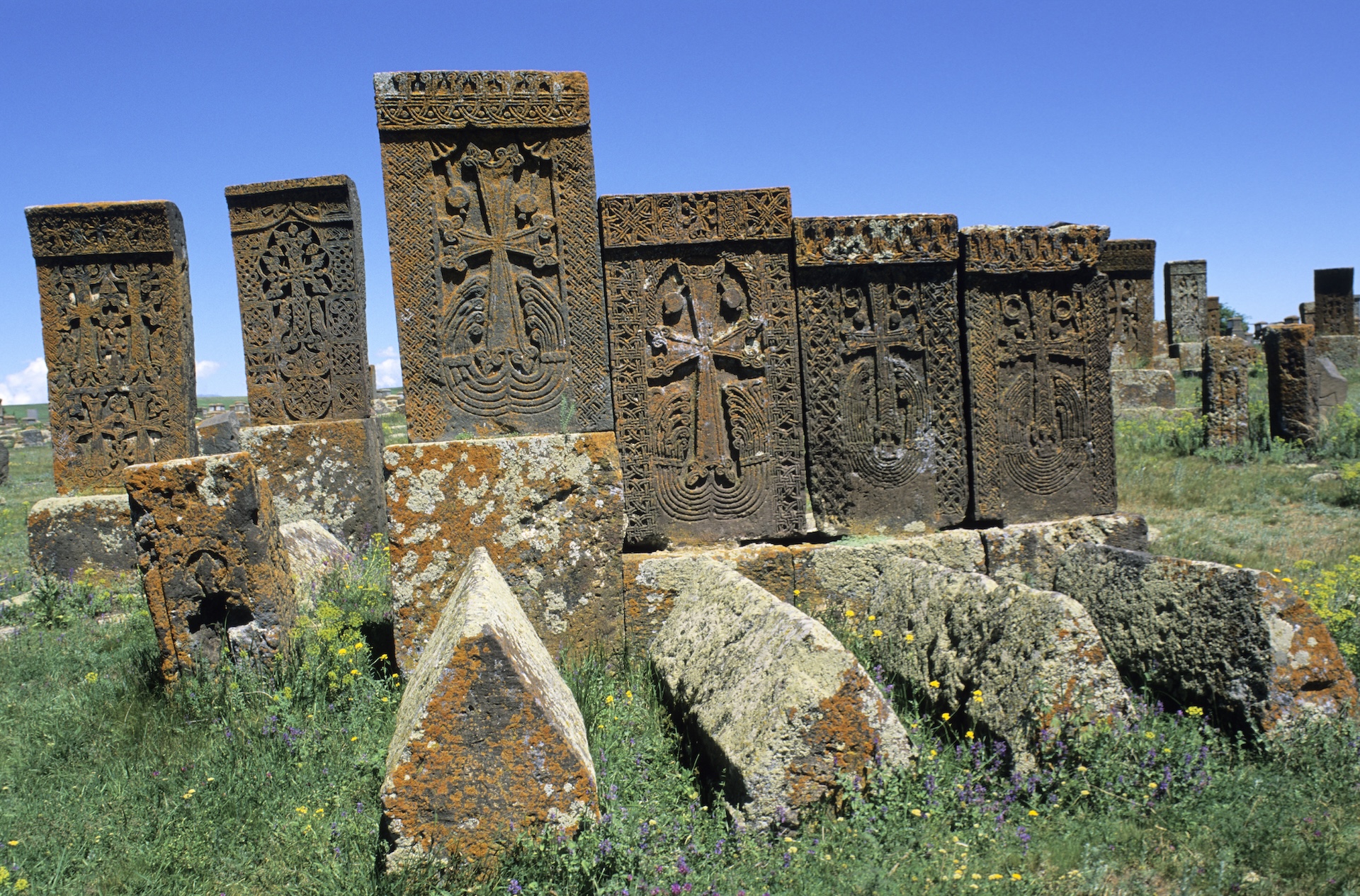
These are undoubtedly the most emblematic works of Armenian heritage. Since the 9th century, “khachkars”, literally “cross-stones,” have spread across the country, a testament to its deeply Christian identity.
It is estimated that tens of thousands exist. Found in large numbers in cemeteries, as seen here, they often serve as funerary steles, engraved with inscriptions asking for the salvation of the deceased’s soul. However, they can also be found along roads or paths, sometimes erected to commemorate a particular event, or simply as a sign of worship.
In keeping with Armenian tradition, “khachkars” do not depict the body of Christ but instead feature leaves and fruits symbolizing the victory of life over death. These vegetal motifs, combined with geometric patterns and arabesques, create richly ornamented designs. Most often, the cross is crowned by an arch, which might symbolize the gate evoked in the Gospel according to John, where Christ is quoted as saying: “I am the gate; whoever enters through me will be saved.”
Sadly, the “khachkars” of Nagorno-Karabakh have faced significant danger since Azerbaijan’s takeover of the territory. Scientists struggling to document the erasure of Armenian traces in the region encounter a major challenge: the size of these steles makes it impossible to detect their destruction using satellite imagery, as can be done with churches, for example. This causes growing concern, fueled by the precedent in Nakhichevan, now part of Azerbaijan but historically part of Armenia. There, the cemetery of Djulfa, which once held several thousand khachkars, was entirely destroyed. Since 2005, nothing has been left of it, and the Azerbaijani government not only denies the destruction but also the very existence of this necropolis.